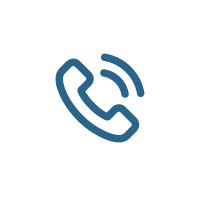Notification Hub
Azure Notification Hub: Scalable Push Notifications for Modern Applications
Technical Overview
Imagine you’re managing a global application with millions of users, and your team needs to send real-time updates, alerts, or promotional messages to devices across multiple platforms. This is where Azure Notification Hub shines. It’s a cross-platform push notification service designed to handle massive scale, ensuring your messages reach users reliably and efficiently.
At its core, Notification Hub is architected to simplify the complexities of push notification delivery. It integrates seamlessly with platform-specific notification services like Apple Push Notification Service (APNs), Firebase Cloud Messaging (FCM), and Windows Notification Service (WNS). By abstracting these services, Notification Hub provides a unified API for developers, reducing the need for platform-specific coding.
Architecture
The architecture of Notification Hub revolves around three key components:
- Namespaces: These act as containers for Notification Hubs, allowing logical grouping and management of hubs.
- Notification Hubs: Each hub is a scalable messaging engine capable of broadcasting notifications to millions of devices.
- Registrations: Devices register with the hub, providing platform-specific identifiers (e.g., device tokens for APNs or registration IDs for FCM).
When a notification is sent, Notification Hub dynamically routes the message to the appropriate platform-specific service, ensuring delivery to the intended devices. This architecture supports advanced features like tag-based routing, which allows targeting specific groups of users based on attributes such as location, preferences, or device type.
Scalability
One of Notification Hub’s standout features is its ability to scale effortlessly. Whether you’re sending notifications to hundreds or millions of devices, the service is designed to handle bursts of traffic without compromising performance. This scalability is underpinned by Azure’s global infrastructure, ensuring low latency and high availability.
Data Processing
Notification Hub supports rich data payloads, enabling developers to send customised messages that include images, sounds, and deep links. Additionally, it offers telemetry capabilities, providing insights into notification delivery rates, failures, and user engagement. These metrics are invaluable for optimising campaigns and troubleshooting issues.
Integration Patterns
Notification Hub integrates seamlessly with other Azure services and third-party systems. Common integration patterns include:
- Azure Functions: Trigger notifications based on events or workflows.
- Logic Apps: Automate notification delivery as part of broader business processes.
- Event Grid: React to events in real-time and push updates to users.
Advanced Use Cases
Beyond basic notifications, Notification Hub supports advanced scenarios such as:
- Geo-targeting: Send location-specific alerts during emergencies or promotional campaigns.
- Personalisation: Use tags and templates to deliver tailored messages to individual users.
- Multilingual Notifications: Automatically localise messages based on user preferences.
Business Relevance
In today’s hyper-connected world, timely and relevant communication is a cornerstone of user engagement. Azure Notification Hub empowers businesses to deliver impactful messages that drive customer satisfaction, retention, and revenue growth.
Consider industries like e-commerce, where push notifications can alert users about flash sales or abandoned carts. Or think about healthcare applications that notify patients of upcoming appointments or critical health alerts. Notification Hub’s ability to deliver these messages reliably and at scale makes it an essential tool for organisations aiming to enhance their digital presence.
Moreover, the service’s cost-effective pricing model ensures businesses of all sizes can leverage its capabilities without breaking the budget. With pay-as-you-go pricing, organisations can scale their usage based on demand, avoiding upfront infrastructure costs.
Best Practices
To maximise the value of Azure Notification Hub, consider the following best practices:
- Use Tags Strategically: Tags are a powerful way to segment your audience. Define tags based on user attributes like location, preferences, or device type to ensure targeted messaging.
- Optimise Payloads: Keep notification payloads lightweight to minimise delivery latency and ensure compatibility across platforms.
- Monitor Telemetry: Leverage telemetry data to track delivery rates, troubleshoot failures, and refine your notification strategy.
- Secure Registrations: Use authentication mechanisms like SAS tokens to protect device registrations and prevent unauthorised access.
- Test Across Platforms: Ensure notifications render correctly on all target platforms by testing payloads and templates thoroughly.
Relevant Industries
Azure Notification Hub is versatile and finds applications across a wide range of industries:
- E-commerce: Drive sales through promotional notifications, abandoned cart reminders, and personalised offers.
- Healthcare: Enhance patient engagement with appointment reminders, medication alerts, and health tips.
- Finance: Notify users of transaction updates, fraud alerts, and market trends.
- Gaming: Keep players engaged with event notifications, achievement updates, and promotional offers.
- Government: Deliver emergency alerts, public service announcements, and event updates to citizens.
Adoption Insights
With an adoption rate of 4.27%, Azure Notification Hub is gaining traction among organisations looking to enhance their communication strategies. This presents an opportunity for businesses to join a growing community of adopters and leverage the service to stay ahead of the curve.
